
The Intellivision is a home video game console released by Mattel Electronics in 1979. It distinguished itself from competitors with more realistic sports and strategic games. By 1981, Mattel Electronics had close to 20% of the domestic video game market, selling more than 3.75 million consoles and 20 million cartridges through 1983. At its peak Mattel Electronics had about 1800 employees in several countries, including 110 videogame developers. In 1984, Mattel sold its video game assets to a former Mattel Electronics executive and investors, eventually becoming INTV Corporation. Game development ran from 1978 to 1990, when the Intellivision was discontinued.

Ghostbusters is a licensed game by Activision based on the film of the same name. It was designed by David Crane and released for several home computer platforms in 1984, and later for video game console systems, including the Atari 2600, Master System and Nintendo Entertainment System. The primary target was the Commodore 64 and the programmer for the initial version of the game was Adam Bellin. All versions of the game were released in the USA except for the Amstrad CPC and ZX Spectrum versions, which were released only in Europe, and the MSX version, which was released only in Europe, South America, and Japan.

Imagic was an American video game developer and publisher that created games initially for the Atari 2600. Founded in 1981 by corporate alumni of Atari, Inc. and Mattel, its best-selling titles were Atlantis, Cosmic Ark, and Demon Attack. Imagic also released games for Intellivision, ColecoVision, Atari 8-bit computers, TI-99/4A, IBM PCjr, VIC-20, Commodore 64, TRS-80 Color Computer, and Magnavox Odyssey². Their Odyssey² ports of Demon Attack and Atlantis were the only third-party releases for that system in America. The company never recovered from the video game crash of 1983 and was liquidated in 1986.
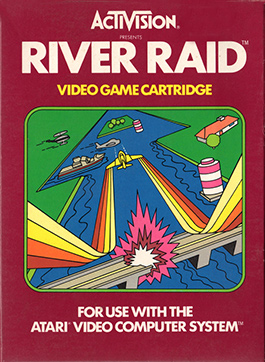
River Raid is a video game developed by Carol Shaw for the Atari Video Computer System and released in 1982 by Activision. The player controls a fighter jet over the River of No Return in a raid behind enemy lines. The goal is to navigate the flight by destroying enemy tankers, helicopters, fuel depots and bridges without running out of fuel or crashing.

Pitfall II: Lost Caverns is a video game developed by David Crane for the Atari 2600. It was released in 1984 by Activision. The player controls Pitfall Harry, who must explore in wilds of Peru to find the Raj Diamond, and rescue his niece Rhonda and their animal friend Quickclaw. The game world is populated by enemies and hazards that variously cause the player to lose points and return to a checkpoint.

Intellivision Lives! is a compilation of over 60 Intellivision video games, originally produced by Mattel Electronics and INTV Corporation between 1978 and 1990. Using original game code and software emulation, Intellivision Productions released the compilation on a Windows and Macintosh hybrid CD-ROM in December 1998. Additional versions were then released for the PlayStation 2, Xbox, and GameCube by Crave Entertainment. In 2010, Virtual Play Games released a Nintendo DS version.
Michael Berlyn was an American video game designer and writer. He was best known as an implementer at Infocom, part of the text adventure game design team. He is also known as the designer behind Bubsy in Claws Encounters of the Furred Kind (1993) and Bubsy 3D (1996).
In the history of video games, the second-generation era refers to computer and video games, video game consoles, and handheld video game consoles available from 1976 to 1992. Notable platforms of the second generation include the Fairchild Channel F, Atari 2600, Intellivision, Odyssey 2, and ColecoVision. The generation began in November 1976 with the release of the Fairchild Channel F. This was followed by the Atari 2600 in 1977, Magnavox Odyssey² in 1978, Intellivision in 1980 and then the Emerson Arcadia 2001, ColecoVision, Atari 5200, and Vectrex, all in 1982. By the end of the era, there were over 15 different consoles. It coincided with, and was partly fuelled by, the golden age of arcade video games. This peak era of popularity and innovation for the medium resulted in many games for second generation home consoles being ports of arcade games. Space Invaders, the first "killer app" arcade game to be ported, was released in 1980 for the Atari 2600, though earlier Atari-published arcade games were ported to the 2600 previously. Coleco packaged Nintendo's Donkey Kong with the ColecoVision when it was released in August 1982.
Cathryn Mataga is a game programmer and founder of independent video game company Junglevision. Under the name William, she wrote Atari 8-bit computer games for Synapse Software in the early to mid 1980s, including Shamus, a flip-screen shooter.

Quicksilver Software, Inc. was founded on May 1, 1984, by three former Mattel Electronics programmers: Bill Fisher, Stephen Roney, and Mike Breen. The company specializes in the creation of strategy, simulation, and educational products, and on focused high-technology R&D projects.

Garry Kitchen is a video game designer, programmer, and executive best known for his work at Activision during the early years of the company's history. He has developed games for the Atari 2600, Commodore 64, Nintendo Entertainment System, and Super Nintendo Entertainment System, as well as co-founded Absolute Entertainment with ex-Activision developers. His port of Donkey Kong for the Atari 2600 was a major hit for Coleco, selling over 4 million copies. His other 2600 work includes Keystone Kapers and Pressure Cooker for Activision and Space Jockey for U.S. Games. He also wrote Garry Kitchen's GameMaker and The Designer's Pencil for the Commodore 64.
Russell Lieblich was a game designer, programmer and musician who first came to prominence for his music for Activision and Intellivision games, as well as doing the Commodore 64 (C64) music translation of one of LucasArts first titles, Ballblazer. He graduated with a Master's Degree in Music from UC San Diego.

Activision Anthology is a compilation of most of the Atari 2600 games by Activision for various game systems. It also includes games that were originally released by Absolute Entertainment and Imagic, as well as various homebrew games. The Microsoft Windows and Mac OS X versions are titled Activision Anthology: Remix Edition, and include the most games. The PlayStation Portable version is titled Activision Hits Remixed.

Megamania is a fixed shooter video game developed by Steve Cartwright for the Atari 2600. It was published by Activision in 1982. In the game, a pilot of an intergalactic space cruiser has a nightmare where his ship is being attacked by food and household objects. Using the missile launcher from their space cruiser, the pilot fends off the attackers. The game was later released for the Atari 5200 and Atari 8-bit computers.
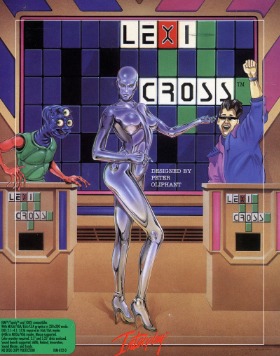
Lexi-Cross is a video game written by Peter Oliphant for MS-DOS and published by Interplay Productions in 1991. A Macintosh version was released in 1992. Lexi-Cross presents a futuristic TV game show, with elements similar to Wheel of Fortune, Scrabble, and Battleship. Players can choose to play as human or alien, and computer opponents are robots.
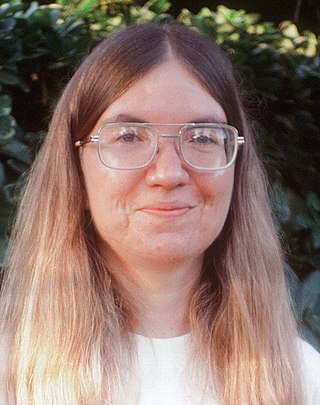
Carol Shaw is one of the first female game designers and programmers in the video game industry. She is best known for creating the Atari 2600 vertically scrolling shooter game River Raid (1982) for Activision. She worked for Atari, Inc. from 1978 to 1980, where she designed multiple games including 3-D Tic-Tac-Toe (1978) and Video Checkers (1980), both for the Atari VCS before it was renamed to the 2600. She left game development in 1984 and retired in 1990.
Games by Apollo Inc. was a third-party developer of games for the Atari 2600 video game system, based in Richardson, Texas. It was founded in October 1981 by Pat Roper as a subsidiary of his National Career Consultants (NCC). Apollo's first title was Skeet Shoot, and neither it nor the ten games that followed caught on, and the company was one of the first to declare bankruptcy as a result of the video game crash of 1983.
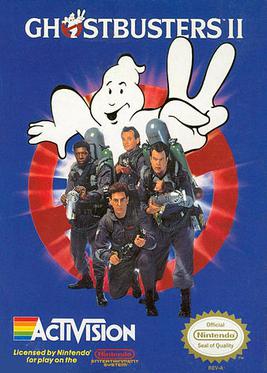
Ghostbusters II is a 1990 action game for the NES, developed by Imagineering and published by Activision. It is based on the 1989 film of the same name, and was released in the United States in April 1990, followed by a United Kingdom release in March 1991.
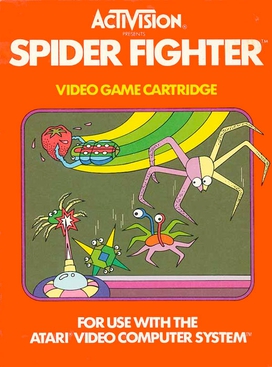
Spider Fighter is a fixed shooter designed by Larry Miller for the Atari 2600 and published by Activision in 1982. The object of Spider Fighter is to protect an orchard containing fruit—grapes, strawberries, oranges, and bananas—from four kinds of bugs. Digital Press described it as "much like the coin-op game Stratovox but w/o the voice."













